Holiday 2014 Law Library Reading List
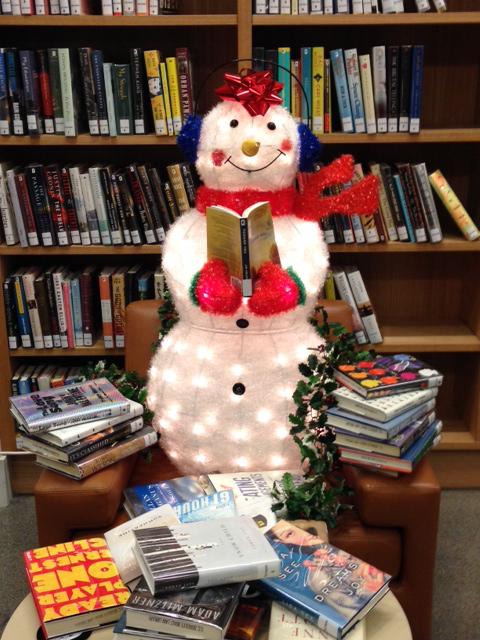
Photo: Edna Lewis, Reference Librarian
“A reader lives a thousand lives before he dies, said Jojen. The man who never reads lives only one.”
― George R. R. Martin, A Dance with Dragons
Your holiday shopping begins and ends here. Our most eclectic list yet. With thanks to all the faculty, staff, kids, and grandkids who gift you the joy of reading.
- 20,000 Leagues Under the Sea by Jules Verne (Children)
- All the Light We Cannot See by Anthony Doerr
- Assembling California by John McPhee
- The Bone Clocks by David Mitchell
- Can’t we talk about something more PLEASANT? by Roz Chast
- The Color of Magic by Terry Pratchett
- The Criminal Conversation of Mrs. Norton: Victorian England's "Scandal of the Century" and the Fallen Socialite Who Changed Women's Lives Forever by Diane Atkinson
- The Day the Crayons Quit by Drew Daywaul, illustrated by Oliver Jeffers (Children)
- Diary of a Wimpy Kid: The Long Haul by Jeff Kinney (Children)
- Germany: Memories of a Nation (podcast) by Neil MacGregor
- The Hank Williams Reader edited by Patrick Huber, Steve Goodson, and David M. Anderson
- How to Build a Girl by Caitlan Moran (YA)
- Huckleberry by Zoe Nathan (Cookbook)
- I Always Loved You by Robin Oliveira
- Investigator Yashim Mysteries by Jason Goodwin
- The Life-Changing Magic of Tidying Up: the Japanese Art of Decluttering and Organizing by Marie Kondo
- Longmire Series by Craig Johnson
- Macroanalysis: Digital Methods and Literary History by Matthew L. Jockers
- The Misadventures of the Family Fletcher by Dana Alison Levy (Children)
- My Paris Kitchen: Recipes and Stories by David Lebovitz (Cookbook)
- Not that Kind of Girl by Lena Dunham
- Norwegian by Night by Derek Miller
- The Old Filth Trilogy by Jane Gardam
- On the Run: Fugitive Life in an American City by Alice Goffman
- The Oxford Companion to Wine by Jancis Robinson
- Prison Noir stories by incarcerated authors edited by Joyce Carol Oates
- Thank You For Your Service by David Finkel
- White Noise by Don DeLillo
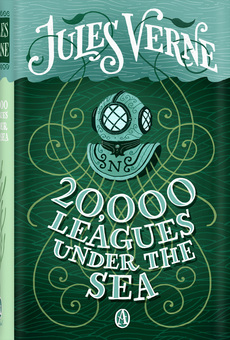
20,000 Leagues Under the Sea
by Jules Verne (Children’s Book)
Dylan Lieberman3rd Grade, Rooftop Elementary School
This is written at the time of 1866. I like this book because it has lots of adventures in the deep depth of the sea, including sharks, squids and cannibals with weapons. With the ship the Nautilus and its crew they fight with them. Captain Nemo leads his crew through adventures. You should read this book if you like exiting adventures.
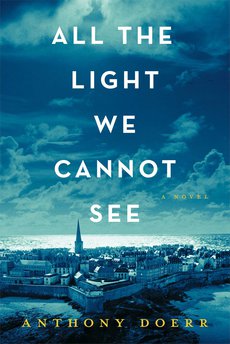
All the Light We Cannot See
by Anthony Doerr
Ellen GilmoreReference Librarian
This haunting, seductive novel takes place in France and Germany during World War II. It’s one of those books that makes you want to drop everything you have to do, immerse yourself in the lives of the characters, and gorge on the beautiful language. Yet it is a perfect book for the busy holidays because the author writes in very short chapters that allow you to come up for air and take a break whenever necessary. This format also propels the story through time and events and creates an almost unbearable suspense. The story moves back and forth between a motherless Parisian girl, Marie-Laure, who became blind at age 6, and Werner, a German boy of the same age who was raised in an orphanage in a small mining town. At the start of the war, 12 year old Marie-Laure’s father is a locksmith and keeper of the keys in the National Museum of Natural History. He also creates intricate wooden miniatures of the neighborhood in Paris where they live so Marie- Laure can learn to navigate the streets, first by feeling the tiny structures and then by memory.
She and her father are forced to flee to Saint-Malo in 1940, and much of the novel takes place within its ramparts. The evocative descriptions of this historic walled city are one of the many pleasures of the book. Describing the famous tidal range of its bay, Doerr says, “At the lowest tides, the barnacled ribs of a thousand shipwrecks stick out above the sea”. And of its houses during the German occupation, Doerr writes, “So many windows are dark. It’s as if the city has become a library of books in an unknown language, the houses great shelves of illegible volumes, the lamps all extinguished.” A parallel story follows Werner, a preternaturally gifted student of circuitry and radio mechanics whom the Nazis train to intercept illegal radio transmissions, and whose life intersects with Marie- Laure’s in complicated, poignant twists of plot. A few pages at the end of the novel jump to 2014, where the author notes that “every hour... someone for whom the war was memory falls out of the world”.
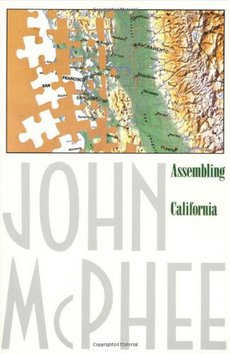
Assembling California
by John McPhee
James Ross KiteLibrary Intern
In and around Berkeley, we have ready access to many beautiful natural features. In this, the penultimate volume in his Pulitzer Prize-winning Annals of the Former World, John McPhee explores the history of the landscape. Assembling California is told as the narrative of a road trip with geologist Eldridge Moores down Interstate 80 from the Sierras to the coast. Written with impeccable prose, McPhee's focus rests on the intersection between immense and impersonal geologic time and immediate and emotional human time. He recounts the origins of the gold deep beneath the earths surface and tells the stories of the men and women who made (and lost) their fortunes in the Gold Rush. McPhee and Moores take rich side trips such as a journey to the Parthenon in Athens to tell the story of the plate tectonics revolution. In McPhee's rendering Moores presents a fascinating figure a musician and humanist drawn by his childhood love of the outdoors into the unpeopled history of rocks. This book rewards the reader curious about geology of the beautiful landscape around us, but more surprisingly it also rewards people who have never wondered that.
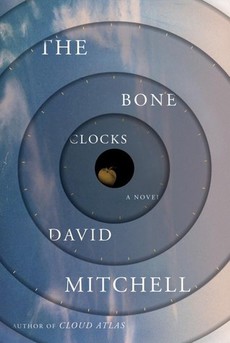
The Bone Clocks
by David Mitchell
Robert C. Berring, Jr.Walter Perry Johnson Professor of Law
I did not read Cloud Atlas but I had heard that it was an award-winning, serious book. As I began this book I was expecting a challenging, literary read. (See my review of White Noise elsewhere). Instead it was a very readable book, six inter-twined stories that shifted through time and ended up falling deeper and deeper into a fantasy novel. The first and last stories are my favorites. One told by a rebellious teenager in late 20th Century London, the other by an old woman in a dystopian West of Ireland in 2043. The book drags in spots and is too clever by half, but it is a fun romp. These days I quit reading when I lose interest and I made it through almost 600 pages of this one. There is a bit of comic book battling, but I made it through that spot and finished. A fine book for a long night and a glass of wine.
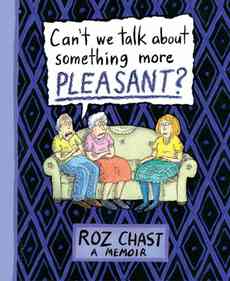
Can’t we talk about something more PLEASANT?
by Roz Chast
Ramona MartinezBoalt Express
I’ve read two memoirs in a row now. Not intentionally. Generally I’m not a non-fiction reader but the cover of Gary Shteyngart’s book, Little Failure: a memoir has an adorable photo of him in a push-pedal car on the cover and it made me flash back to many happy childhood memories of riding in a similar car.

That was enough to get me to pick up the book. But it was a slow read and I came away somewhat dissatisfied. The same cannot be said of the second memoir I read, Can’t we talk about something more PLEASANT? by New Yorker cartoonist Roz Chast. I had to wait for two other colleagues to finish reading this book before I could get my hands on it. I put a hold on it so I would be sure to get my chance as soon as it was returned to the library. I had heard an interview with the author on the radio a while back and the subject matter has recently become particularly relevant to my life. My sister and I are in the midst of figuring out what to do about our mother who is exhibiting signs of dementia. Trying to make sense of what we are seeing is difficult - even traumatic. Our mom has always been a strong, fiercely independent woman and now she is confused and unsteady on her feet. After several weeks of working together with our aunt who came out from New York and a Geriatric Care Manager (aka Medical Social Worker who specializes in elder care) to assemble a network of caregivers and other kinds of help around the house, I very much looked forward to reading about Roz Chast's experiences. A reviewer calls this a "memoir of a most wretched time in her life" but the grim subject is disguised in cartoons. I raced through this book in a matter of days. I felt a lot better about my own situation as I read about Roz Chast’s parents who were much more intractable than my mother. Neither did she have the advantage of a sibling who lived nearby. The author’s descriptions of her conversations with her parents and the accompanying illustrations that captured their facial expressions are vividly realistic. I could easily relate to her and empathize. Sometimes it is good to be reminded we are not alone-that others have weathered similar struggles and have lived to tell the tale.

The Color of Magic
by Terry Pratchett
Joe CeraReference Librarian
I believe the biggest drawback to any travel book is the need to focus on true events. Imagine an opportunity to read a book that is a mix of historical fiction and a travel book except the historical and travel parts are also fictional. The Color of Magic is the first book in the Discworld series that is currently more than 40 books strong. This story follows the exploits of a wonderfully naïve traveler who arrives in a rougher area looking for heroes, bar fights, and adventure. His interest is not so much to be a part of these things but to witness them so he can tell his friends about it. With the help of his trusty travel trunk made of Sapient wood, Two Flower gets in and out of all kinds of difficult situations. His unwilling guide is an unsuccessful wizard named Rincewind who has only ever learned one spell before being kicked out of the wizard academy. This book focuses on just one set of characters in one area of Discworld and the detail and story is rich enough to explain how this series has expanded so much over the years. Imagine the Lord of the Rings but much bigger. In line with all great science fiction stories, there are even books dedicated entirely to things like the science of Discworld. By my calculations, I should have a steady stream of book reviews for at least the next 20 years at 2 books per year. Check back in May for a review of the second book in the Discworld series.
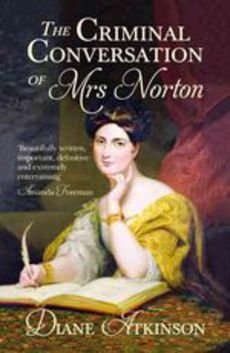
The Criminal Conversation of Mrs. Norton: Victorian England's "Scandal of the Century" and the Fallen Socialite Who Changed Women's Lives Forever
by Diane Atkinson
Monique MacauleySerials and Acquisitions
This book is an in-depth look at the life of the noted author Caroline Norton and her role in the promotion of women’s rights and the changing of divorce and custody laws in19th century England. Caroline starts on her path when, at nineteen, she is coerced into marrying George Norton, a boorish unsuccessful barrister ten years her senior. Because of George’s inability to make a living the family income is supplemented by a small inheritance of Caroline’s and the royalties for her novels and poetry. Noted for both her beauty and her wit, her husband George is alternately violently jealous of men’s attentions to his wife, and then courting the attention in order to receive job and social opportunities. This behavior is most notable in his encouraging Caroline’s friendship with the then Prime Minster Lord Marlborough whom he then accuses of and brings suit against for “Criminal Conversation” (an affair) with his wife. Though Lord Marlborough, and by extension Caroline, are acquitted of the charges Caroline she is barred from retrieving her belongings from the house, taking control of her money, and is denied access to her children.
The books then follows Caroline’s decades long struggle to change British lawto allow women more legal rights. She is instrumental in the passing of the Infant Custody Act of 1839 which allowed women to have access to their children, the Matrimonial Causes Act of 1857 which gave women the ability to sue for and obtain a legal separation from their husbands, and the 1870 Married Women's Property Act which allowed women to have some control over their finances after marriage. Whew, and that’s not all of it! Fascinating if you are at all interested in Victorian England, the British legal system in the 19th century, the literary scene of the late 1800s, or the major political players of that time period. Dense and concise, this isn’t an easy read but it is a good one. Located in the library’s collection at PR5112.N5 Z75 2013. Check it out!

The Day the Crayons Quit
by Drew Daywaul, illustrated by Oliver Jeffers (Children’s Book)
Leah Klein2nd Grade, Fairmont School
My book is The Day the Crayons Quit by Drew Daywalt with pictures by Oliver Jeffers. It is about a box of crayons quitting a boy named Duncan. They all write letters to him. The only crayon that doesn’t quit is green. It likes to draw crocodiles, trees, dinosaurs and frogs. But it doesn’t like that the yellow and orange crayons are arguing about being the color of the sun. The pink crayon and the beige crayon complain about not being used. The gray crayon is tired because it is coloring big things like all the elephants, rhinos, hippos, and humpback whales. The red crayon says it is overworked because it has to work on holidays like Santa on Christmas and hearts on Valentine’s Day. The purple crayon doesn’t like that Duncan colors its beautiful color outside the lines. Blue complains about being stubby because it is used the most. White feels empty because it is the same color as the paper. Peach complains that Duncan peeled off its paper so it is naked and embarrassed. At the end of the book Duncan wants his crayons to be happy. He colors a picture with all of the crayons and the things in the picture are not their usual colors like a crocodile that is blue and a pink dinosaur. His teacher gives him an A+ for creativity. I think this book would be good for children to read because it’s funny that the crayons quit and I like the pictures. It is a happy ending.
The End

Diary of a Wimpy Kid: The Long Haul
by Jeff Kinney (Children’s Book)
Isaac Klein5th grade, Fairmont School
My book review is on Diary of a Wimpy Kid: The Long Haul by Jeff Kinney. It is the ninth book in the Diary of a Wimpy Kid series. The main character is Greg Heffley and he tells the story. Greg is in middle school and likes to play video games. He is not a good student and has only one friend. His older brother is Rodrick and his younger brother is Manny. In this book the family goes on a road trip. They bring along their old broken boat to carry extra bags and stuff. They stay in a crummy hotel and meet another family there that they call the “purple van family”. The purple van family has horrible kids and Greg’s family thinks they are following them. The Heffleys also go to a fair and win a pig that destroys their car. They also go to Soak Central, a water park, and lose their locker key so Greg’s parents don’t have their wallets and phones. Then the Heffleys have to go home. The end was really funny because Gregory finds the locker key in his shorts a few weeks after they come home. He wonders if he should tell his parents the truth and face the consequences, hide the key in Rodrick’s laundry or flush it down the toilet.
I recommend this book to kids in fourth grade and up. I liked it because all of these crazy things keep happening. The story keeps your attention and I couldn’t stop reading it. I finished it in two days. There are also a lot of pictures, like comics, which are really funny. In conclusion, I recommend this book and all of the other books in the Diary of a Wimpy Kid series.

Germany: Memories of a Nation (a podcast)
by Neil MacGregor
Anneliese MissbachCataloging
If you are a history buff, or just interested in art, culture and politics, and need a break from reading, you might enjoy this podcast series by the BBC Radio 4.
Timed to coincide with the 100 centenary of WWI and the 25 anniversary of German reunification, the British Museum in London is curating a show on German history from the Holy Roman Empire through post-war Germany.
At the same time, Neil MacGregor, the director of the British Museum, attempts to explain 600 years of Germany’s complicated and turbulent history through art objects, architecture and literature in a podcast. This 30 part series by the BBC Radio 4 is downloadable for free, and each segment lasts no more than 15 minutes. MacGregor has the gift to connect objects to an often very challenging German history and illuminates this with anecdotes that make understanding the national consciousness of this nation easier. Amongst other things, he links the spiritual significance of the German forests with the tales of the Brothers Grimm and points out Albrecht Dürer as the inventor of the logo. Sturm und Drang, Bratwurst and the Bible, he covers it all.
If you can’t make the show in London or rather read, MacGregor published a book by the same name.
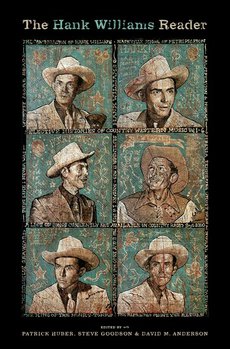
The Hank Williams Reader
edited by Patrick Huber, Steve Goodson, and David M. Anderson
Michael LindseyDirector, Library Web Development
I have framed portraits of Hank Williams in my home and in my office. I have made cookies to share at work on his birthday. I had a Hank Williams repertoire that I used to sing on the street.
I have a weird feeling about growing up in the South, but thanks to him and Sun Ra, I have found some way to connect and relate to my native Alabama. I can hear my relatives intonation and cadence in his speech. It’s comforting and orienting.
But I find the idea of stardom degrading to all involved, resulting in dizzy misconceptions and serving a dubious psycho-cultural function. So it was with great pleasure that I picked up Oxford University Press’ Hank Williams Reader, published this past year. It presents a historiographic approach to his biography and apotheosis after his death at age 29. Primary documents like newspapers, trade publications, court filings, and interviews are presented with careful editorial annotations which lay out exactly how his legend developed over time.
I was left with no less respect for the man. However, now I feel like there is less clutter around the shrine I admit I have built for him in my mind.

How to Build a Girl
by Caitlan Moran (YA)
Fiona Lewis11th Grade, The Bentley School
In her 2 nonfiction works, How to Be A Woman and Moranthology, British writer Caitlan Moran weaves much of her personal history and personality into the pages. And although her newest book, How to Build a Girl, is nominally a work of fiction, it too reveals itself to be biographical as well. Like Moran herself, the protagonist Johanna Morrigan grows up in the projects of Wolverham in a Bohemian (and not in the cool way) family and eventually escapes a dead end life by becoming a magazine writer. At the beginning of the book, Johanna is overweight, feels ugly, alienated, and embarrassed, so she decides to reinvent herself. Now at 16, Johanna is smoking cigarettes, writing scathing reviews of rock bands and partying hard, determined to save her family, and finds out that most of all, she must save herself.
I love Moran's writing - she is honest and touching and funny and never tries to hide who she was or where she came from. Warning: her work can be raunchy and may not be for everyone.
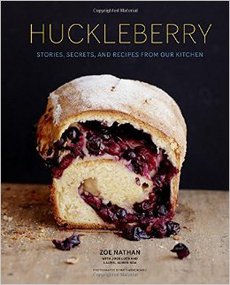
Huckleberry
by Zoe Nathan
Louise FrancisExecutive Director, International and Executive Legal Education
I am a hobby baker who collects cookbooks like Lady Brett collected men, but for some mysterious reason I am a monogamist when it comes to breakfast cookbooks. There is room for only one in my life. I have flirted a lot with icons, such as the Breakfast Book by Marion Cunningham and The Pancake Handbook: Specialties from Bette’s Oceanview Diner, without buying them. When I saw Huckleberry it was love at first sight. The yellow and white dotted page edges, and the cover photo of a loaf of golden brioche overflowing with juicy blueberries, drew me in. Recipes similar to recent indulgences — Lemon Pistachio Cake (shared a yummy one at Babette), Apple Carrot teacake (had such a muffin in Calistoga) intrigued me. That so many of its recipes feature a favorite food— dishes topped with eggs -- tempted me. What made me take the plunge and buy it as my one breakfast cookbook was that the author, Zoe Nathan, worked at Tartine, and appears passionate, happy and immensely energetic and creative.
I have spent many hours now with Huckleberry, reading nearly every recipe and baking several items, including the Blueberry Brioche and the Apple Carrot teacake (which I converted to muffins). Now that I know the cookbook well, I call it Peter. Peter was a guy I fell for in college: gorgeous, smart, sassy, fun and very cool, but untrustworthy. As long as you were on your guard, Peter was tremendous fun. If you expected a trustworthy companion, he was not it.
Bakers can have a lot of fun with Huckleberry. It features muffins, yeast breads, bagels, crumbles, teacakes, loaves, and creative savory brunch recipes that can easily be made for dinner, such as the Kabocha Squash and Sausage Brown Betty and the Beer-Braised pork. Huckleberry should inspire a baker to experiment and take risks. If you give this book as a gift, alert the recipient that poor attention to detail turned Huckleberry from Prince Charming into Peter.
Tartine and other baking books have turned me into a baker who uses my scale over my measuring cups. Luckily my lawyer side causes me to verify, so I glanced at the cup measurements and suspected the weight options were double what they should have been for the Blueberry Brioche. A google search produced an Amazon review from a baker who had ruined her Brioche dough because she used the weight directions, and warned that another recipe has similar weight errors. So I armed myself with a pencil and my copy now has several annotations about things like correcting weights when they do not match the cup measurements — the cups are right, the weights are wrong -- and giving technique details when her technique is vague (such as how to do the final roll of the Blueberry Brioche dough). I have also reduced portions to make dishes for just family, and not a crowd, as with the Kabocha Squash and Sausage Crumble. As with Peter, I do not regret allowing this book into my life. I am just glad I see it for what it is — pure fun, not a once-in-a -lifetime breakfast cookbook. When another contender comes my way I will check its trustworthiness, and if I commit to it, I will have no trouble saying goodbye to the pretty, fun, cool Huckleberry.

I Always Loved You
by Robin Oliveira
Marlene HarmonReference Librarian
How does one become a painter? Let Robin Oliveira take you to Belle Époque France with Mary Cassatt to see. Cassatt, a young, unmarried woman leaves the United States after the Civil War to become a painter in Paris. It may be unheard of, and her family may be appalled, but she is undaunted. At least until the Paris Salon rejects her paintings after a decade of work. At this juncture the already famous Edgar Degas, secretly fascinated by her, comes to the rescue, professionally and personally. It won’t be the only time he does, and it is a favor Cassatt will return more than once in their long, cantankerous and sometimes rewarding relationship. I loved looking over Cassatt’s and Degas’s shoulders as one paints and the other sculpts. Oliveira brings the Paris of the late nineteenth century to life and inhabits it convincingly with impressionists like Edouard Manet and Berthe Morisot, with Mary’s family especially her sister and father. Did Degas and Cassatt love each other? Their contemporaries certainly wondered about the nature of their relationship, but the reader of Oliveira’s novel does not doubt.
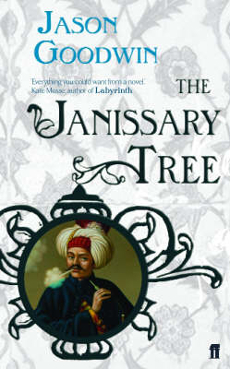
Investigator Yashim Mysteries
by Jason Goodwin
Edna LewisReference Librarian
When I was in Istanbul recently (not by the way a phrase I normally get to use), I did the clichéd tourist thing and picked up a series of mysteries set in Istanbul during the wane of the Ottoman Empire (1836- 42). Investigator Yashim, a eunuch detective, has ties to all of Istanbul from the Sultan in Topkapi Palace to the boatmen rowing the kayiks back and forth across the Bosporus. The mysteries are, well, byzantine, and Goodwin interweaves all sorts of arcane bits of history and local color into the stories. Yashim visits the Sultan’s Harem (he is a eunuch remember), the massive underground cisterns, and the Grand Bazaar (when it truly was a functioning bazaar instead of a tourist trap). The first book in the series, The Janissary Tree, which focuses on the Janissary soldiers who protected the empire, is probably the best and won the Edgar Award. All of them are fascinating, however, and drop you immediately into a world of spice markets, narrow twisting cobblestone streets, and political intrigue.
The series includes in order: The Janissary Tree, The Snake Stone, The Bellini Card, An Evil Eye, and The Baklava Club.

The Life-Changing Magic of Tidying Up: the Japanese Art of Decluttering and Organizing
by Marie Kondo
Chris TarrHead of Cataloging
Here’s a good book for the new year: The Life-Changing Magic of Tidying Up: the Japanese Art of Decluttering and Organizing by Marie Kondo. Okay, I know a book about decluttering does not sound very attractive, but this book is so charming and odd it’s worth reading even if you have no intention of decluttering. I have not put her method into practice, yet, but I might —
Essentially, her method is to take everything you own in a certain category, clothing, for instance. Gather it all together and get rid of anything that does not bring you joy. Once you’ve gotten rid of everything you don’t love, you will easily be able to put away everything you do love and there will be no more clutter. “Start by discarding, all at once, intensely and completely,” she says. Take each item in hand and ask yourself, “’Does this spark joy?’ If it does, keep it. If not, dispose of it.” By doing this, she says, you will reset your lifestyle. My personal favorite was her advice on papers. The chapter heading says, “Sorting papers. Rule of thumb — discard everything.” She goes on, “My basic principle for sorting papers is to throw them all away ... After all, they will never inspire joy, no matter how carefully you keep them.”
I have to admit that reading Kondo’s book made me imagine living in a house that was not full of things I don’t need. I actually do think she’s right — I’m imagining no clutter anywhere and suddenly a lot more time to travel. Is this crazy? I have not put her method into practice, yet, but I might.

Longmire Series
by Craig Johnson
Chris TarrHead of Cataloging
Here’s a guilty pleasure — Craig Johnson’s The Cold Dish and the rest of the Longmire series. If you’ve seen the TV series Longmire you’re familiar with the characters and the setting, but I like the books better — for one thing, it’s less completely unbelievable that Walt and Vic would be attracted to each other. My theory about mysteries is that they’re essentially comforting armchair travel with characters you like, and what could be better than reading about Wyoming blizzards while sitting inside in a California rainstorm. They’re great.

Macroanalysis: Digital Methods and Literary History
by Matthew L. Jockers
Dean RowanDirector, Reference & Research Services
For an introduction to digital humanities, one could do worse than begin with Jockers’ enthusiastic account of his research into patterns of influence in the Victorian novel. Arguing not only how one can conduct literary history, but how one ought to do so, Macroanalysis integrates parallel discussions, one methodological, one substantive. The method derives from easy access to large archives of data and almost limitless computing power. Jockers has compiled an exhaustive digital corpus of Victorian novels on which he performs statistical tests that reveal correlations (of word usage to gender, nationality, decade, etc.) heretofore unavailable at such a scale to the individual human reader. The substance treats literature less as a product of individual creative choice than as an aggregation of linguistic conventions only subconsciously respected by authors. Who knew that the frequency of use of the word “the” by American authors trailed by almost precisely 1% its use by British authors over the course of the 19th century? In fact, many scholars have perceived the phenomenon, but Jockers demonstrates it graphically, and the demonstration poses a new problem: “Over a period of one hundred years, it is as if the writers in these two nations—two nations separated by several thousand miles of water in an age before mass communication—made a concerted effort to modulate their usage of this most common of common words.” Why did this occur? Jockers doesn’t know, but his work’s achievement is revelation of the question.
Jockers is sometimes too enthusiastic, only weakly admitting that traditional “close reading” approaches to literary study can complement his recommended distant examinations. He is clearly captivated by the prospect of a Silicon Valley school of critical reading, that is to say, a discipline involving neither reading nor criticism, but MIPS. We await the digital study that will resolve definitively the perennial literary question: Why is the book always better than the movie?

The Misadventures of the Family Fletcher
by Dana Alison Levy (Children’s Book)
Jacob Klein5th Grade, Fairmont Elementary
My book review is about The Misadventures of the Family Fletcher by Dana Alison Levy. It is about four brothers named Sam, Jax, Eli, and Frog. They have two dads and the boys are adopted. Sam is twelve years old and in sixth grade. He likes soccer and his new phone. Jax is ten years old and he is in fourth grade. He has to do a report on a veteran. The trouble is that he picked his angry neighbor, Mr. Nelson, to interview. Also his best friend is not hanging out with him. Eli is also ten years old and in fourth grade. He is really smart. He is starting a new school, which he really wanted to go to where everything is more advanced. Frog is six years old and his real name is Jeremiah. This year Frog is going to kindergarten and he has imaginary friends like Flare his pet cheetah. Each chapter is told from either Sam’s, Jax’s, Eli’s or Frog’s point of view. The chapters also begin with a message, email or text, often from one of the dads. Throughout the book, the boys all have ups and downs and the story has a lot of surprises.
I recommend this book to kids grades four to six. Even though it was confusing at first because the story switched between the boys, I wound up really liking it. There were a lot of surprises. For example, Eli did not like the new school. The work was interesting but he missed his old friends and fun things like recess. Or when Jax kept trying to use diplomacy to get his neighbor to talk to him for his veteran’s report and the neighbor just thought Jax was bothering him. Overall it was a satisfying book and I really enjoyed it.

My Paris Kitchen: Recipes and Stories
by David Lebovitz
Edna LewisReference Librarian
I am a big fan of David Lebovitz, a former pastry chef at Chez Panisse, and especially his blog living the sweet life in Paris. So when Lebovitz appeared at the Pasta Shop in Berkeley last May, I queued up with all these Bay Area foodies to get my signed copy of his latest book My Paris Kitchen: Recipes and Stories. I can report that Lebovitz is as charming and unpretentious in person as his blog suggests. And, more importantly, the cookbook is terrific. The Pasta Shop had thoughtfully whipped up several favorites from the book to take the tedium out of waiting in line including scrumptious red beet hummus and yummy artichoke tapenade. Fans of the blog will recognize many of the recipes which are accessorized by Lebovitz’s mouth- watering photos and witty commentary.
So buy a copy (they make great gifts for friends as well - just ask my friend Carole) and don’t forget to invite me over when you cook from it!
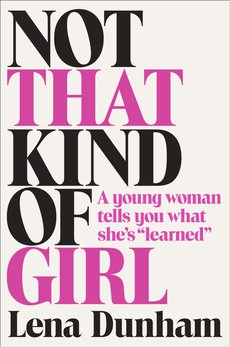
Not that Kind of Girl
by Lena Dunham
Claire Donovan-Suguitan10th Grade, El Cerrito High School
Not that Kind of Girl by Lena Dunham is a quirky coming of age in the 21st century story. The book is a batch of essays written about Dunham’s life, spanning from early childhood through her mid-twenties. The book chronicles her memories of being the child of two artist parents in New York; as she grows up, you learn all about her teenage mishaps and malfunctions. She grew up during the age of the Internet, with the ability to google any disease or boyfriend, and her book includes food logs, and other neurotic obsessions. She was in therapy beginning in childhood and into her adult years, and tells the reader all about it. Befriending her therapist’s daughter is one of the many inappropriate relationships Lena writes about.
Lena seems pretty gawky, yet she is undoubtedly insightful. Her perspective on life, love and friendship in these stories is embellished with startling details. Lena seems to be most influenced by her encounters with quirky people, and reading about her perceptions about these people is hilarious. She is daringly honest and is willing to expose her naive and compulsive thoughts, often without much of a filter. Her fearlessness is intriguing, with much to relate to, if you are just willing to admit it.
Dunham seems to have a strong opinion on just about everything, which I found respectable, whether or not I always agreed with her views. Lena Dunham’s book is poignant and sometimes perplexing. As you read Not that Kind of Girl you will wonder, laugh, scrunch your forehead, and maybe sigh. A fun, easy read, especially if you like smart, racy and provocative essays.
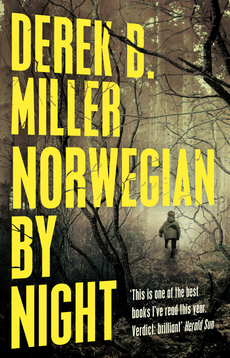
Norwegian by Night
by Derek Miller
Robert C. Berring, Jr.Walter Perry Johnson Professor of Law
My selection for a crime thriller is a book that is atypical fare. This book is a delicious scramble of languages, cultures, ages and the battle between good and evil as carried forward by people lacking superpowers or even exceptional detective skills. By placing an aging, Jewish curmudgeon, relocated from New York City by his daughter after the death of his caring wife, in Oslo, where said daughter now lives with her husband, Miller sets up a myriad of problems. Then comes the murder, with the survivor being a child who speaks neither English nor Norwegian. The grandfather, at times totally lucid and at times flashing back to his army career in the Korean War, takes the child on the run. Since he cannot speak the language and because he is naturally suspicious of everyone, he turns out to be a more elusive prey for those chasing him than one might imagine. He is more of a formidable hero than expected. The violence is not protracted but it feels real. The whole book does. I was giving away copies of this one for a bit. A great read.
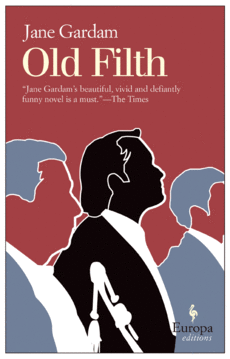
"The Old Filth Trilogy" Old Filth The Man in the Wooden Hat Last Friends
by Jane Gardam
Michael LevyAssociate Director, Law Library; Lecturer in Residence
In a review of Jane Gardam, Maureen Corrigan on NPR described her as "the best contemporary British writer you probably haven't heard of." I recently discovered Gardam when I read a review of the final book ("Last Friends") in what is known as the Old Filth trilogy. Old Filth is an acronym for "Failed in London, Try Hong Kong" and refers to Sir Edward Feathers, an accomplished lawyer who makes his career in Hong Kong rather than London. The first book "Old Filth" follows Feathers as he returns to England after a lifetime away from the country. Gardam weaves the story of Feather's childhood in Malaya and his subsequent private school education back in the old country, with his long marriage to Betty and career in Hong Kong. The subsequent two novels are not sequels but a fleshing out of the finely drawn characters that have been introduced. We revisit events from the perspective of Betty as well as Feather's longtime rival (both professional and personal) Terry Veneering.
Gardam is a superlative writer, with an economy of style that moves the books along a brisk pace. Through the lens of a long life and marriage she paints a vivid picture containing both gentle humor and great sympathy for her characters. I also viewed the books as a representation of the demise of the British Empire. Feathers is the last of those people who both grew up and lived their lives outside of Britain in the various corners of the imperial empire. I've recommended these books to many people and nobody has yet been disappointed.

On the Run: Fugitive Life in an American City
by Alice Goffman
Stephen Smith CodyDirector, Atrocity Response Program, Human Rights Center
Alice Goffman won the best dissertation award from the American Sociological Association a few years back. On the Run is the highly anticipated book version of her dissertation. And, in contrast to a few dissertation-to-book projects, it's infinitely readable. The book offers a thoughtful glimpse into the lives of young black men dodging the police in Philly. It also provides a gripping indictment of common police practices, particularly in chapter two “The Art of Running” and chapter three “When the Police Knock Your Door In.” Don’t skip the methodological note, which is at least as good as the main text. You don’t need to be from West Philly to appreciate the book... though it doesn’t hurt.
Unfortunately, the hardcover of On the Run is too big for stockings. So if you are looking for stocking stuffers, Alex Kotlowitz’s There Are No Children Here, which recounts the lives of two brothers growing up in Chicago’s Henry Horner Homes in beautiful and heartbreaking prose, is a great alternative.

The Oxford Companion to Wine, 3d ed.
by Jancis Robinson
Marci HoffmanAssociate Director and International and Foreign Law Collections
I decided to review a book that I often refer to during the course of a weekend. The Oxford Companion to Wine is a wonderful reference tool for those who enjoy drinking and learning a bit about wine. Now in its third edition, the book is great for a quick look-up about an unfamiliar grape or about a specific winemaking process. Recently, one of my favorite Sonoma wineries released a 2012 Vermintino. After enjoying a glass of this wine, I decided to look up this particular grape in the Oxford Companion. This grape is described as follows: “attractive, aromatic white grape variety” grown primarily in Italy and France. After reading about this grape, I then read about vermouth (a herb-flavored fortified wine) and the fungal disease called verticillium wilt. I shared a bottle of this wine with a friend, and he also did a bit of research on this grape using his copy of the Oxford Companion. The third edition is showing its age a bit, but its still considered the seminal volume on wine and can be found in almost every tasting room and wine store. The over 4,000 entries are accompanied by lovely photos and great maps of wine growing regions. So, if you need a good gift for the wine lover on your list, consider this book. If nothing else, it will look impressive on your coffee table and can be used as a really large coaster supporting many glasses of wine.
P.S. Not into wine, there’s also an Oxford Companion to Beer!

Prison Noir stories by incarcerated authors
edited by Joyce Carol Oates
Monique MacauleyAcquisitions/Serials
Compelling stories by incarcerated authors from Akashic Books. Some of these writers are very good and make one wonder what they could have done with their talent if things had gone differently in their lives. The stand out stories for me were: There Will Be Seeds for Next Year by Zeke Caligiuri and How eBay Nearly Killed Gary Bridgway by Timothy Pauley, though they are by no means the only good stories in this collection. I highly recommend this book if only so it reminds the reader that there are people who are locked up and that there is more to many of them than just their crimes. With an introduction by Joyce Carol Oates. The law library has this in the bestsellers collection. Check it out!

Thank You For Your Service
by David Finkel
William BenemannLaw Library Archivist
Can a book about how our country is failing its wounded warriors, about PTSD and traumatic brain injuries, about domestic violence and suicide ever be anything but unrelentingly depressing? It can be in the hands of Pulitzer Prize-winning author David Finkel. Finkel accomplishes the impossible by imbedding the reader in the lives of the wounded soldiers and their wounded families until you feel like a fly on the wall of a soulless McMansion purchased with the death benefits of the only person who could every make it feel like a home. When the story he is telling becomes too emotionally overwhelming, focus on Finkel’s stunningly evocative prose. A sad story skillfully told.

White Noise
by Don DeLillo
Robert C. Berring, Jr.Walter Perry Johnson Professor of Law
This one is in the oldie-but-goodie category. In conversation with someone DeLillo’s book came up, with much talk what a game-changing work it was. Having once read all of DeLillo’s books for reasons that made sense at the time, I knew that I had read it and that it was about environmental degradation. But I could remember almost nothing else. Inwardly chagrined I bought a used paperback and dived in. Turns out that it is a terrific read. The book is a very detailed satiric vision of university life, blended families, environmental concerns, media and the pharmaceutical industry. And it is funny. DeLillo was far ahead of his time with this one. His description of the importance of federal drills that are held in case of a hazardous waste spill taking precedence over dealing with an actual hazardous waste spill still seems vital. DeLillo can write luscious, glowing prose. His depictions of daily objects are priceless. The book is too much, too noisy and too crazy but it ends just in time. This one holds up. Besides it will be in your public library or available for purchase for less than a pumpkin Frappuccino.

Wishing you love and laughter this holiday season and beyond.
The Law Library
photo: Edna Lewis, Reference Librarian